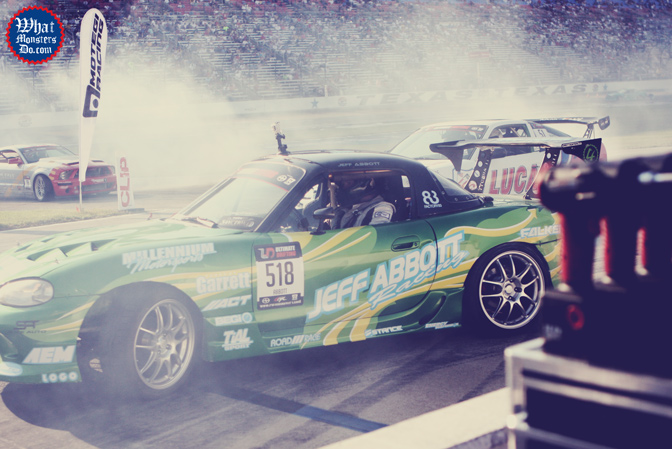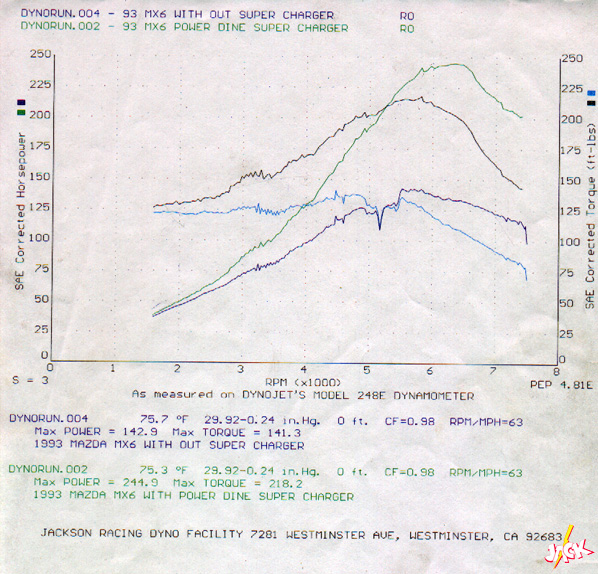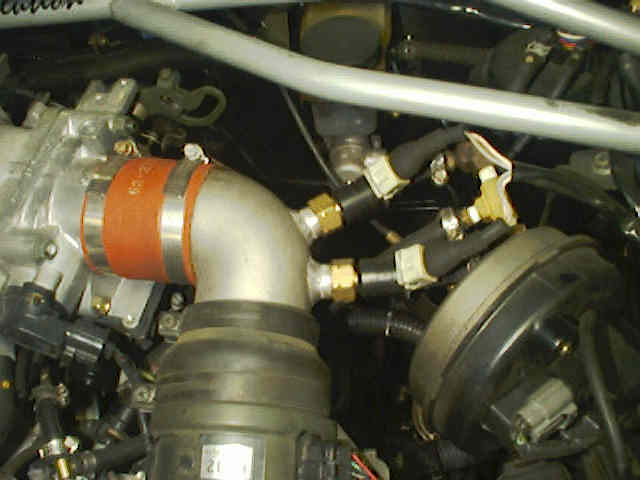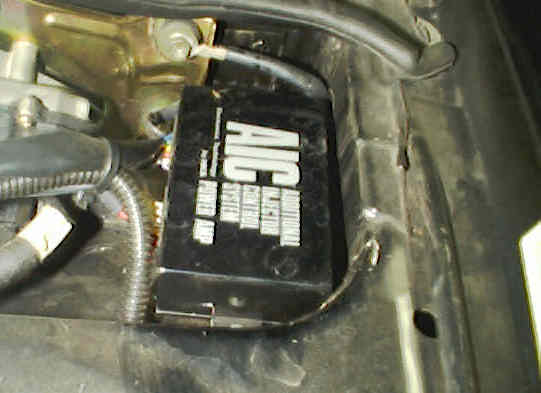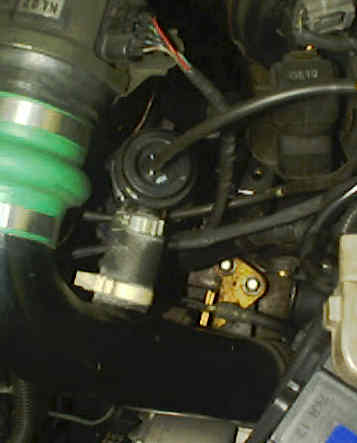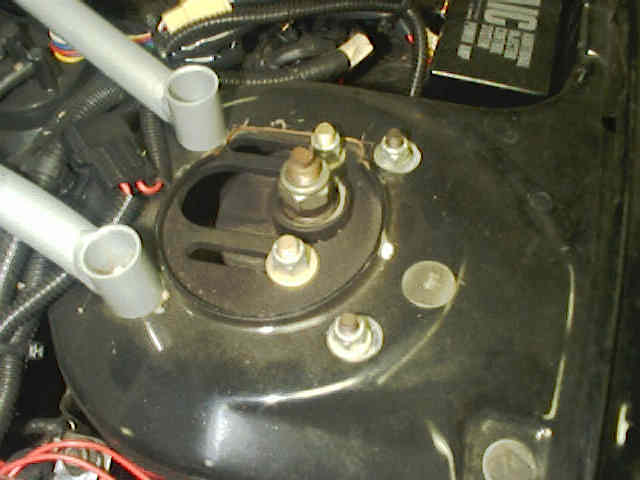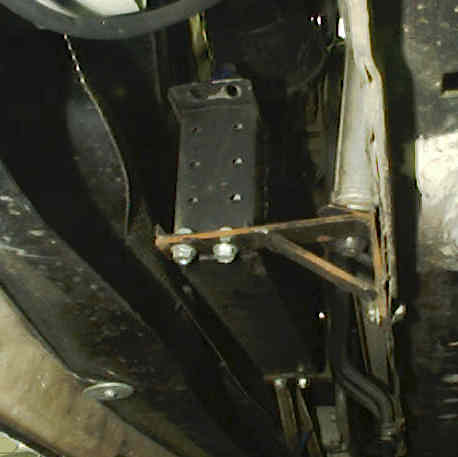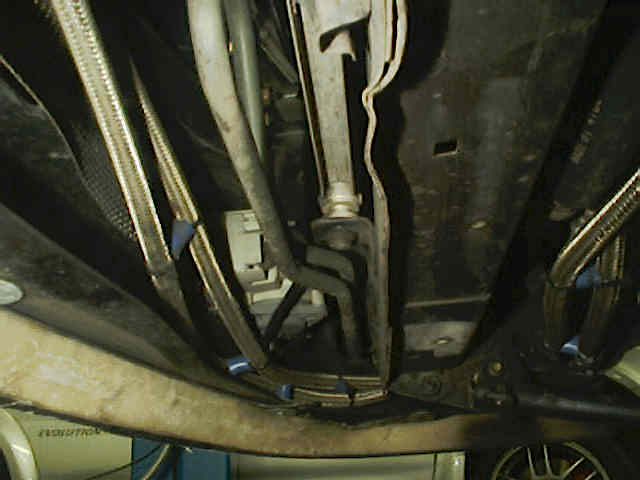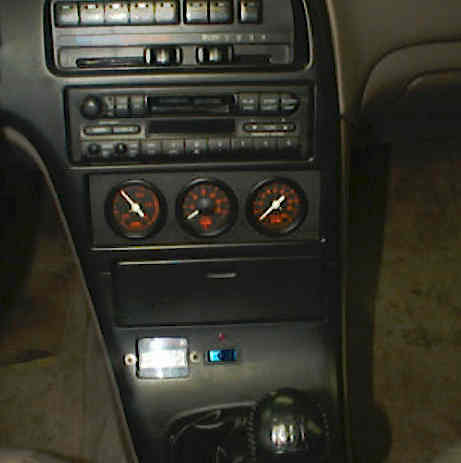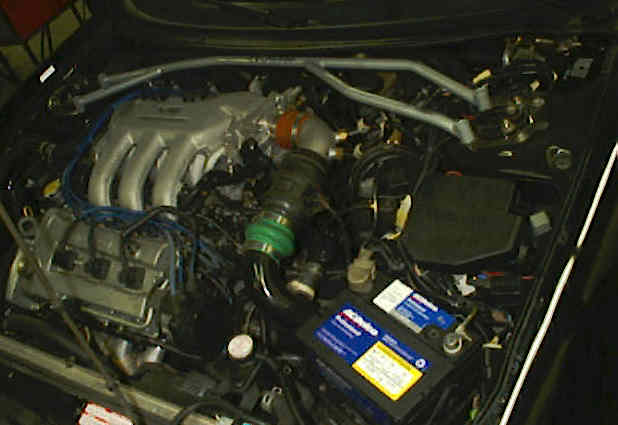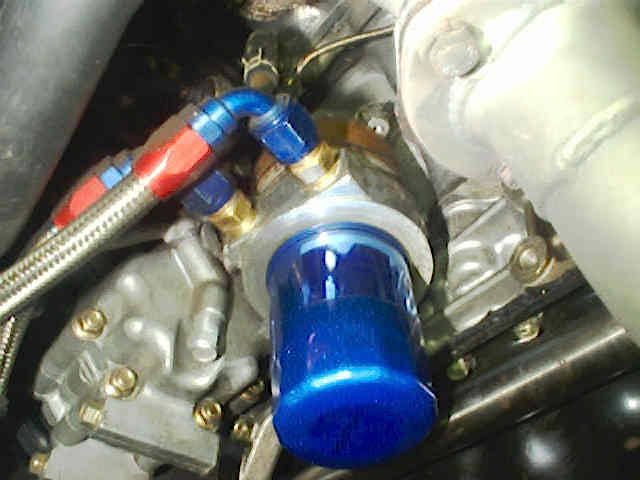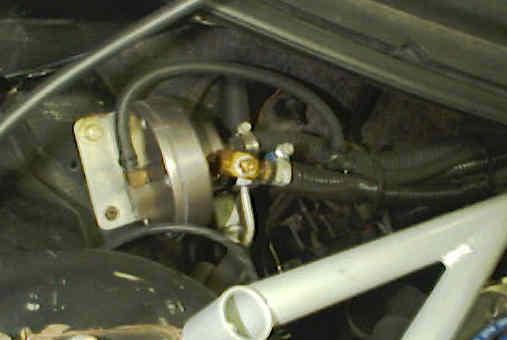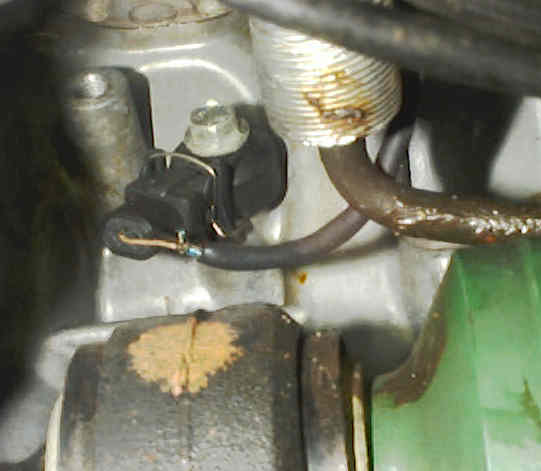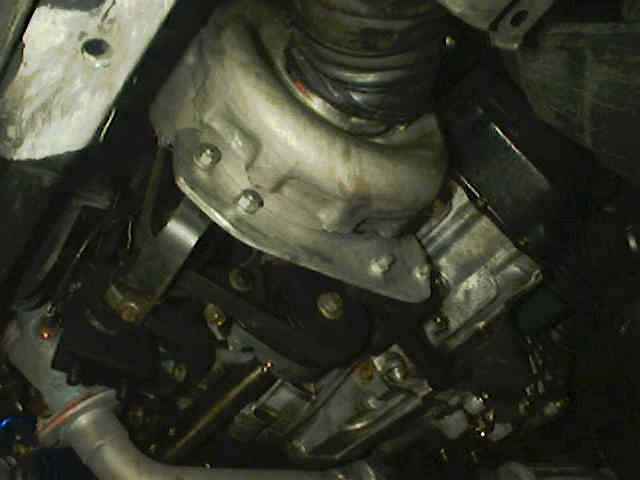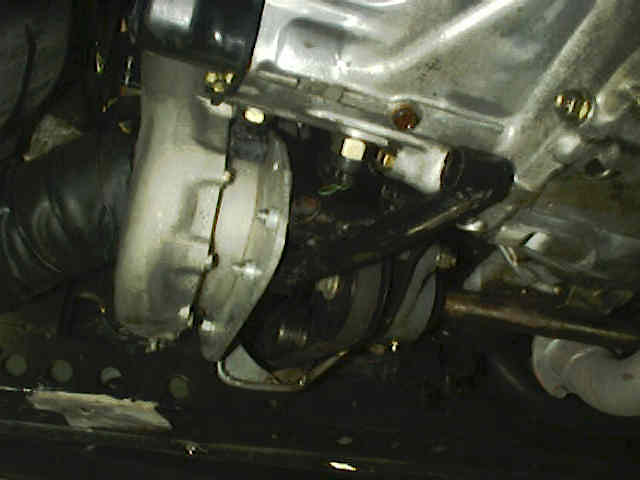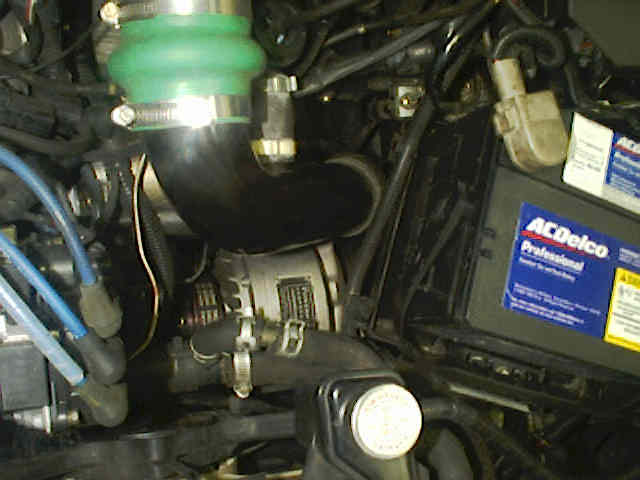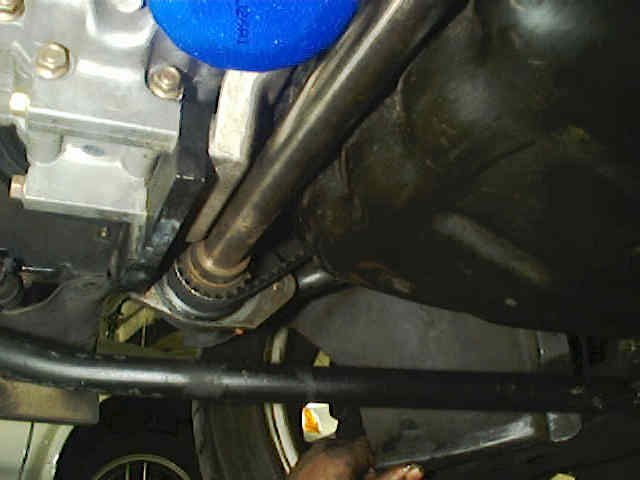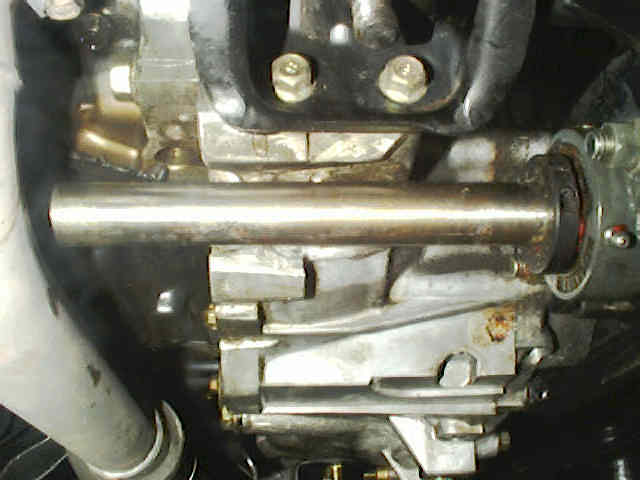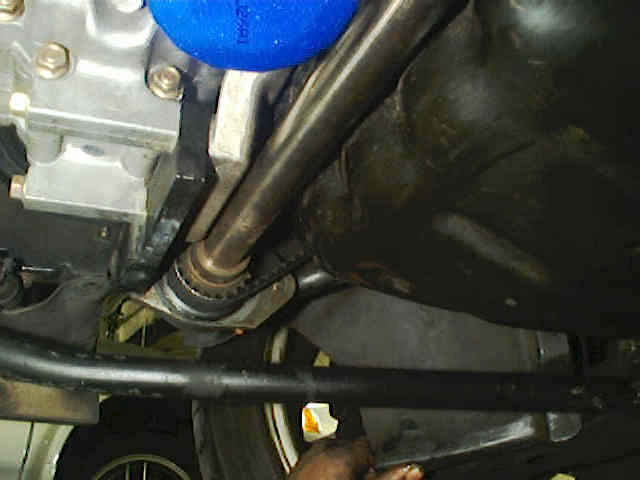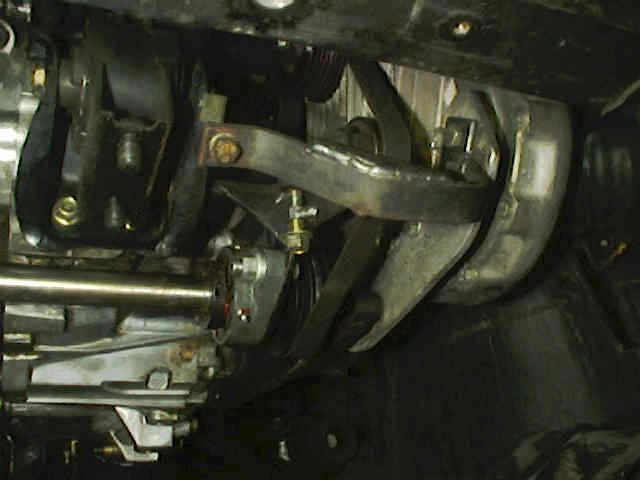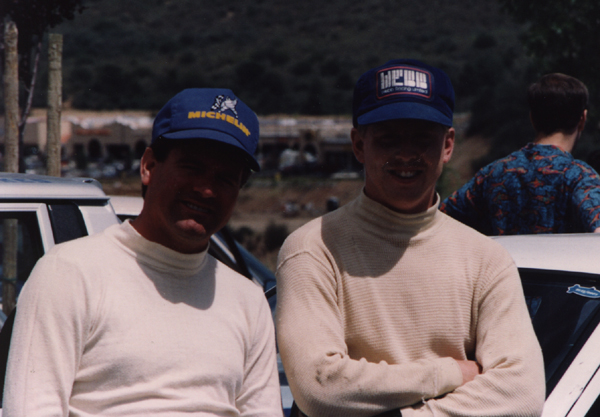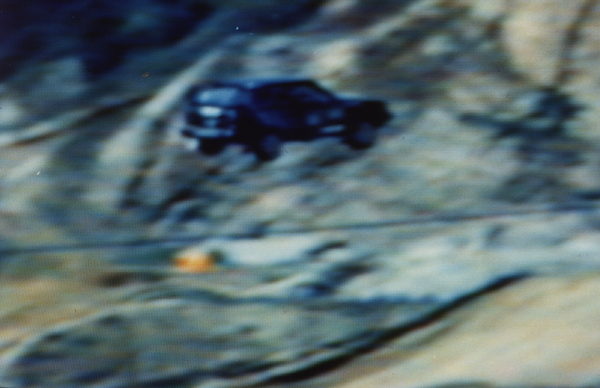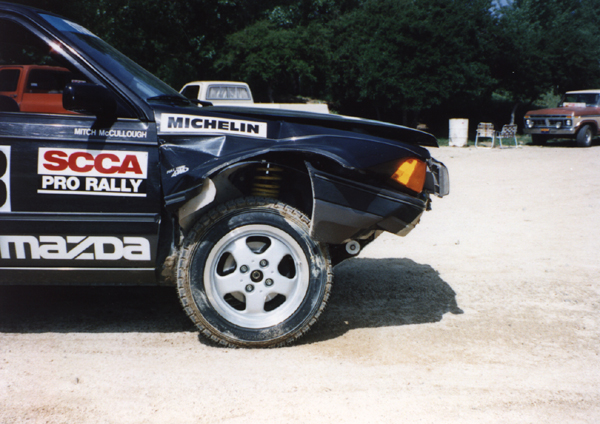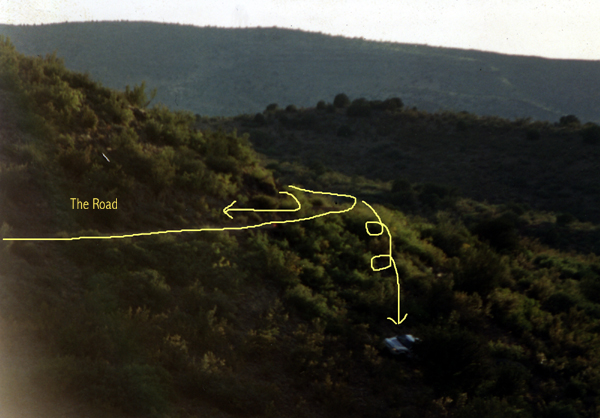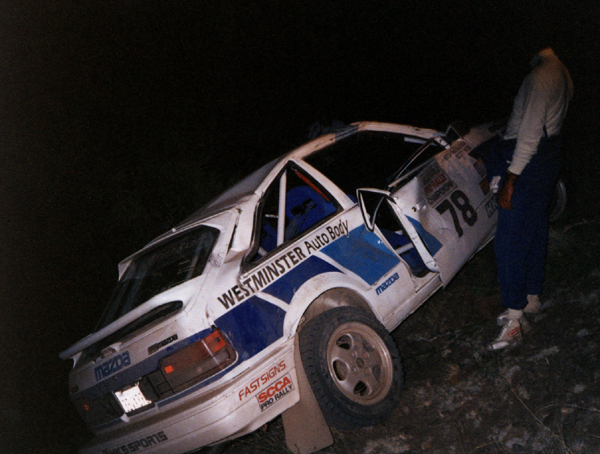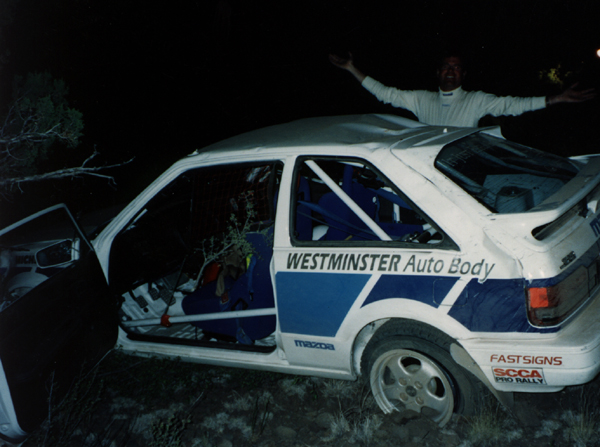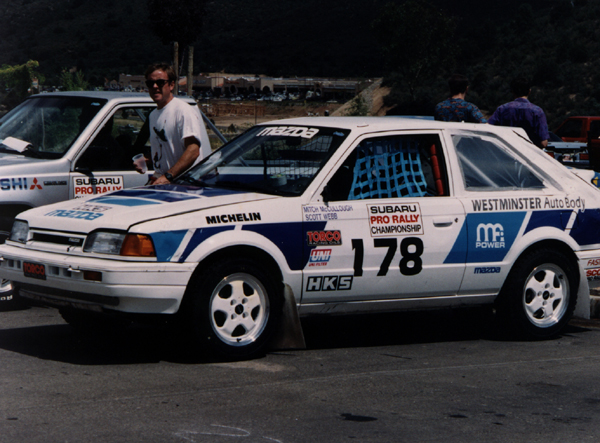Danny George Pikes Peak 2014 – Prep and Practice
We decided to drive the RRE Rally Box Van to Colorado to help Danny George prepare to run his FD Miata up Pikes Peak. We met him at John’s house there in Colorado Springs to help make the conversion from drift to grip. We pretty much took over the driveway, garage and turned the basement into a dorm room with 7 guys all camped out on the floor.
http://www.youtube.com/watch?v=[HcqUu6j00TQ/embed]
Pics are in the gallery below. Once the car was ready, we took it to Pikes Peak Raceway to do some practice with the grip setup. Then up the mountain at 4am to be ready to run when the road opens up for practice at 5am. Then they run to 9am when the road is open to the public. They divide the course into 3 sections and each day you practice one section with your run group.
Danny George’s Driveby at RRE
The RRE/Berk Technology LS Turbo powered 350Z was all ready for the show and safely in the pits the night before the FD season opener in Long Beach California. Danny George had some last minute parts challenges and a long haul from Las Vegas and needed a place to spread out and finish up some details the night before the race. We opened up the shop, the dyno and some sofas to crash on for our 2nd favorite Formula D team for an all nighter.
http://www.youtube.com/watch?v=[tTUCtgXAglI/embed]
Mazda Suitcase Car
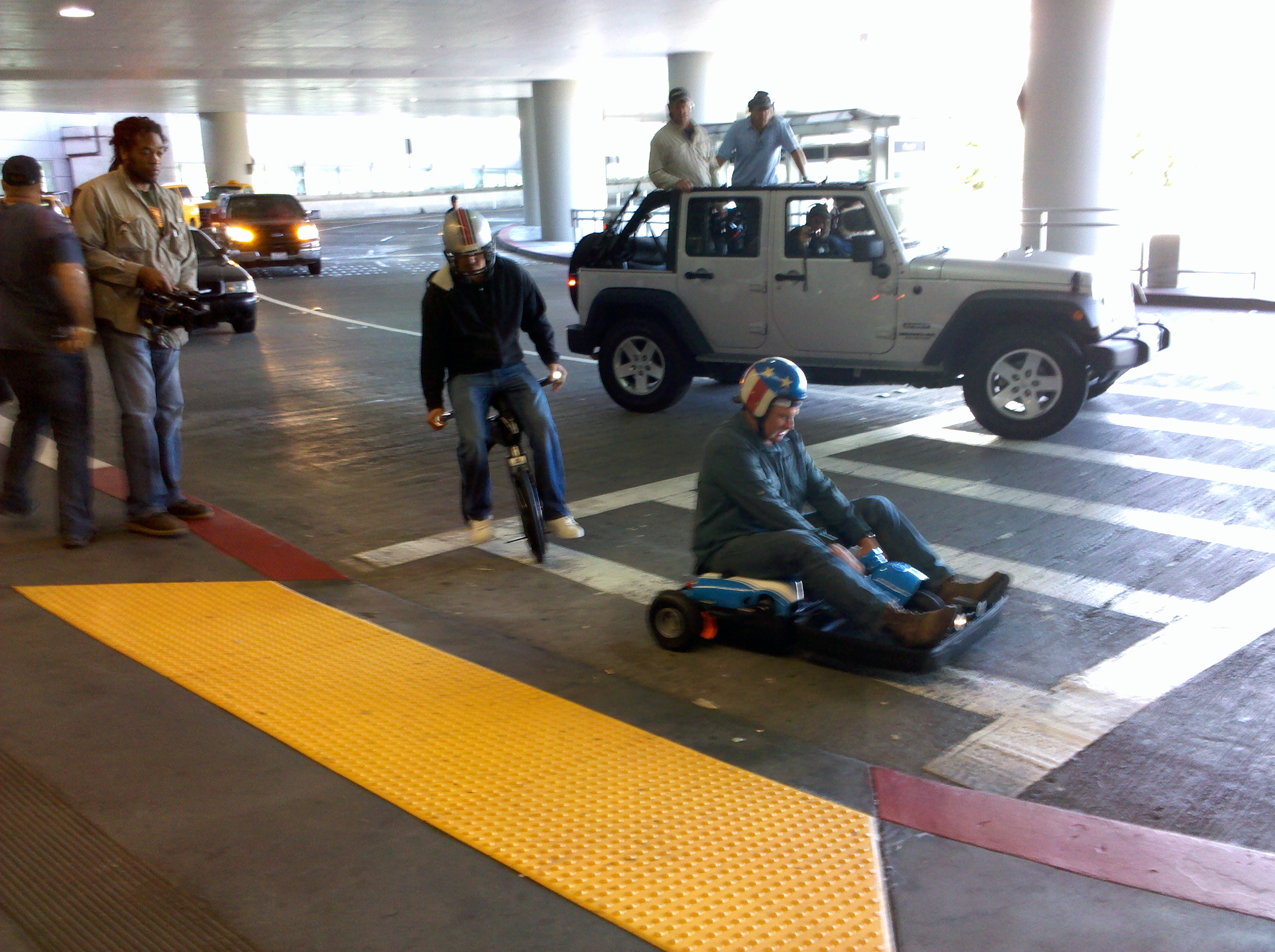
So we have this little relic from Mazda back in the 90’s. We are Suitcase Car specialists it turns out :-) I worked on this little car when I was working for Rod Millen and it has followed me arround ever since. Mostly it just sits but once a year or so I get to drag it out for a TV show appearance. I’ve been with this little car on the morning news, That’s Incredible, Inside Edition, Guiness World Records, Junkyard Wars and more.
The production company for The History Channel’s Arround the World in 80 Ways contacted me about using the Suitcase Car for their show. The premise for this episode is that the two guys arrive at the San Francisco airport and need instant transportation. One gets the Mazda Suitcase Car, the other gets a Yike Bike to drive off on.
They arranged to use the international terminal and luggage and passenger pickup area. With approval from the airport management, SFPD and TSA the filming went pretty smooth. I got a mini paid vacation to San Francisco and also to be an extra (Puzzled Guy #2 in the passenger loading zone). Something different to do other than answer e-mail and talk on the phone!
RRE MIATA??
OMGWTF? RRE Works on Miatas?
[youtube]http://youtu.be/OF5F5ODSMkE[/youtube]
Mike @ RRE tuned the AEM EMS Series 2 ECU on Jeff Abbott’s FD Miata. It is not only DSMs and EVOs all day every day. There are some weird things going on at RRE like JOON MAENG’S S13 and JEFF ABBOTT’S Miata. Come by the shop and see what is going on!!
Everyone who is anyone reads MOTORMAVENS! You are in your favorite PJs sipping some coffee and you see a MIATA and ask, IS that an RRE sticker on that MIATA??
Why yes, that is an RRE sticker. Get out of your PJs and come to an FD event to support these fools!!
Sport Compact Car Magazine – MX Missile

Reprinted with permission from Sport Compact Car, June 1999
By Josh Jacquot
Back in the cold war era, the MX missile was the ultimate symbol of an in-your-face militant America that was ready to reign terror with a single, destructive blow on anyone that threatened our peaceful existence. While not quite as threatening as the thankfully dead ICBM, John Park’s ’93 Mazda MX-6 will still likely raze just about anything that gets in its way. Also, much like the silo-stored missiles of the ‘70s and ‘80s, Park’s MX-6 hides its important bits far from highly-critical public eye. In fact, so secret was this car that it was kept from the hungry eyes of the aftermarket performance magazines since being built several years ago.
Park’s car was built to follow a specific concept, according to Mike Welch at Road/Race Engineering in Huntington Beach, Calif., who is mostly responsible for the car’s high output. The goal for the black MX-6 was to be as fast as possible without sacrificing the car’s stock driveability and durability. That means that Park’s MX-6 is still packing functional air conditioning, power steering and other accessories just as it came from the factory.
Park came to Welch wanting an advantage over most anything he might encounter at the stop light grand prix. But, he wanted to be able to do the trouncing with three of his buddies in the car and the air conditioning blasting. He also required that the car do all this without raising the eyebrows of anyone who looked under the hood; a tall order for a front-drive car that weighs more than 3,000 lbs.
Countless hours of work in the form of custom design and fabrication went into transforming the MX-6 into the phenomenal machine that it is today Before installing the supercharger, Welch recommended that Park drive the car for about three months to break in the engine.
The supercharger uses ceramic bearings and an internal belt drive. The belt and bearings last about 30,00 miles before needing a $450 rebuild, according to Welch. Otherwise, the system is relatively maintenance free, requiring only occasional lubrication and cleaning of the industrial bearings used to support the driveshaft. The shaft turns at 11,900 rpm at a maximum engine speed of 7000 rpm. An aluminum skidplate was fabricated to protect the supercharger’s low-mounted drive system.
The entire setup is practically invisible from the top of the engine bay as though the intake is routed below the car to collect cold air. A UNI foam filter feeds the supercharger via a 3-inch hose, while a Bosch compressor bypass valve bleeds excess pressure.
Additional fuel delivery is now accomplished via two HKS 550cc injectors installed just aft of the air flow meter before charged air enters the manifold. A rising rate fuel pressure regulator is used in conjunction with an HKS Additional Injector Controller allowing up to 12 psi boost. A Denso in-tank fuel pump maintains fuel pressure.
Hot Shot headers were used in place of the stock exhaust manifolds, while a Stromung 2.5-inch exhaust system takes the place of the less efficient stock system. The exhaust system also uses a 2.5-inch high-flow catalytic converter.
A J&S Electronics knock retard sensor was installed allowing Welch to advance the engine’s timing without fear of damage from detonation. The J&S unit retards timing on only the cylinders knocking. Installed in the cabin are a J&S air/fuel ratio meter and knock retard meter, allowing Park to keep an eye on the engine’s on-boost performance. Also installed are HKS boost, exhaust gas temperature and oil temperature gauges.
Stock suspension bits were replaced with adjustable Carrera threaded body coil over shocks, which allow the car’s ride height to be adjusted as needed. Road/Race also designed and built front and rear strut tower braces. The front shocks are a full 1 inch shorter than stock, requiring the use of custom camber plates from Road/Race. Welch also installed Power Slot rotors and Repco Metal Master brake pads. Steel braided brake lines are used with Motul brake fluid to enhance brake performance.
The final touches on Park’s MX-6 were cosmetic. Road/Race combined an aftermarket wing designed for an RX-7 and the stock wing from the MX-6 at the rear of the body eliminating the near-stock appearance of the MX-6. A Japanese Mazdaspeed front spoiler was adapted to fit the bumper of the American MX-6 to give the car a more aggressive stance, while all factory emblems and the trunk lock cylinder were shaved. Park chose 16×8-inch wheels from the third-generation RX-7 because of their light 13.5-lb weight. Although not as massive as the rolling stock found on many of today’s hot imports, the lightweight wheels serve their purpose well. Park had the wheels painted black to match the rest of the car.
While the MX-6 has only been put through the quarter-mile once, its times aren’t likely representative of its substantial power increase. The MX-6 ran a 14.0-second quarter-mile on street tires with massive amounts of wheelspin, according to Park. Both the car’s owner and its builders believe it’s capable of much better time given the right tires. Park is considering selling the car now that his secret is out of the bag, we can’t wait to see his next stealthy screamer.
Sport Compact Car Magazine – From The Cockpit – 1994
Sport Compact Car Magazine 1994 – Reprinted with permission
By Mitch McCullough
We were halfway through the eighth stage of the Lake Superior PRO Rally and things weren’t going so well. A misfire in the engine, caused by a faulty throttle position sensor had reduced our power. Then a problem with the clutch linkage made shifting difficult. So I wasn’t too surprised when a Mazda 323 GTX piloted by a fast local driver started catching our 323 GTX.
Our PRO Rally effort had been going extremely well up to this point. I had bought the partially prepared 1988 Mazda 323 GTX just before the 1993 season started, and codriver Scott Webb and I had won the 1993 California Rally Series championship. We had raced against some strong competition and it was the first time in the 18 year history of the series that a driver had won the championship in his rookie year. Webb and I were each named Rookie of the Year.
We went on to clinch the 1994 SCCA Southern Pacific Divisional Championship, which starts and ends on Labor Day. This title earned us an invitation to compete against Divisional champions from around the country at the Press On Regardless PRO Rally in Michigan’s Upper Peninsula, a vast wilderness of deer, trout and the kind of dirt roads all rallyists dream about.
This year, “the oldest, meanest, toughest” rally in America was renamed the Lake Superior PRO Rally. The Detroit Region SCCA, which had organized the Press On Regardless for 47 years, opted to pass the event on to the more strategically located Lake Superior Region, but retained the POR name for a road rally.
Despite the name change, it was the same event with many of the same dedicated workers and the same phenomenal roads. This year’s rally comprised 165 miles of special stages with another 288 miles of transits.
Stage Eight, called Far Point, began as a fourth and fifth gear run through the dark forests. The powerful driving lights filling our mirrors were mounted on the GTX driven by Craig Sobczak of nearby Marquette Mich. Our clutch would not fully disengage, so shifting was difficult. I was staying in fourth gear, lugging out of the slower corners and not shifting up to fifth on the longer straights, trying to avoid damaging the new close ratio gearbox. We had decided to simply drive for the finish.
It was a dark, rainy night and there was still a long way to go. I had lost my enthusiasm for the high speed stages. “You were driving like an old lady,” Webb said later.
When Sobczak got close, I turned on the right blinker and moved toward the right side of the dirt and gravel road, slowing to 70 mph to let him by. But watching Sobczak throw his GTX through the high speed corners inspired me to go faster. “This is like road racing,” I shouted.
Still, Sobczak was pulling away, dropping momentarily from sight around a bend. On the next straightaway we saw that his left taillight lens was missing and the gap between us had narrowed. Then we saw some tracks in the road where someone had skidded toward the ditch. “He went off and tagged the bank!”
Sobczak had slowed only slightly, but we had turned up the wick and cut our distance. Then Webb called an acute right hand corner where we turned off the smooth county road onto a muddy, slimy trail that went up a hill. A crowd of spectators had gathered, standing behind a yellow banner to witness this challenge.
As Sobczak turned in, his 323 bogged in the muddy turn. Seizing the opportunity, I turned inside and went by him, slinging mud in all directions, and accelerated away. Cameras flashed, the crowd cheered-this was racing!
The path we were now on was composed of the slipperiest mud I’d ever seen. Suddenly, I was switched on and the car seemed to be working much better at the lower speeds. We were shifting from second to third and back again, grinding gears, braking in the muck for the tight turns, the car fighting every change of direction as we squeezed through the trees on the narrow path, grappling for grip. We pulled away from Sobczak and when we finished the stage we were ecstatic. We knew we had lost the stage to Sobczak, but we felt as if we had won the race. It was the highlight of the event.
We failed to press on, however. On the next stage we hit a big rock that cracked the sump, draining our engine’s life blood and ending our race through the dark north woods. Veteran John Buffum won the rally in Paul Choinere’s Audi Quattro. Meanwhile, Rhees Harris from Vemmont beat us to take the overall Divisional driver’s title in the Open 4WD class.
I was surprised at my lack of disappointment over failing to finish the event. It had been a great season and we had prepared well, given our meager budget. In nearly two seasons of PRO Rally, we had not suffered any mechanical problems and were happy to gang them all up in one event. And at the awards breakfast, we learned Scott had amassed enough points to take the overall co driver’s divisional championship in our class!
How We Started
I bought the 1988 323 GTX from Bill Morton, a New Zealander who helped prepare Rod Millen’s 323s for the Asia Pacific series. He had built the GTX for his own rallying pleasure and was forced to sell it after taking a job with Toyota Team Europe. He lamented-and I reveled-in the fact that he had only tested the car once and had never gotten a chance to race it.
But Morton had prepared it well. He removed the interior except for the original front seats, door panels and dash. He and Mike Welch welded in a superb roll cage, reinforced with gussets, and painted the interior refrigerator white. Headroom abounded. They bolted on a sturdy skid pan and numerous mud flaps. And they installed an HKS manual boost control and PFC F CON fuel controller to extract additional horsepower from the tired motor.
But the big feature was the suspension: Morton had managed to procure a rally suspension that had been on one of Mazda Team Europe’s 1988 World Rally Championship cars. This suspension was much stronger than the stock setup and the spring and damping rates provided phenomenal handling over loose, rough surfaces. The rally suspension provided adjustable spring perches for varying the ride height and Bilstein competition dampers.
I knew the basic preparation was right. I knew there was a good divisional series in Southern California. I knew I had to have the car. So I bought it, figuring I’d run a few local events. Besides, I reasoned, the car was street legal so I could always use it to run around town.
A mere eighteen months later we had won two championships and had posted finishes in the top five nationally. My experience in autocross, road racing and blasting down the dirt and gravel roads of Eastern Washington and Northern Idaho seemed to have paid off.
The real key to our success, however, was sound car preparation, a crack crew chief and consistent driving.
Rallying What It Takes
Probably no other motorsport requires the combination of car preparation, driving ability, endurance and reliability demanded by rallying. Triumph in the face of adversity is the battle cry of the successful rallyist.
The key is car preparation. A competitive rally car must be fast, tough and reliable. It must be driven consistently fast, with more emphasis on consistency than on speed. PRO Rallies often comprise more than 100 miles of special stages and another 200 miles of transit legs-quite a bit longer than a 20 minute regional road racing event or three minute autocross. Many times we’ve seen drivers go extremely quick in the early stages only to break or crash later in the event. We’ve been guilty of this ourselves.
The car must be prepared to finish events. Too many teams spend too much money on horsepower, overtaxing the gearbox, suspension and brakes. And assuming you can’t afford to spend more than $30,000 for a six speed gearbox, the engine must offer a generous rev range with enough torque at the low end to dig the car out of sandy switchbacks.
Preparing The Rally Car
Our 323 suffered two major crashes during the season. In the first one, I mistook the little 323 for a stadium truck and launched it 12 feet into the air at a rally sprint on the Glen Helen, Calif., motocross facility, landing the car on the front bumper. In the second one, we drifted off a sweeper at the Prescott Forest PRO Rally, rolling four times down the mountain.
Most of our development efforts coincided with repair work from these crashes. Road/Race Autosport, a race preparation shop run by Scott Webb and Mike Welch in Los Alamitos, Calif, prepared the car.
Welch replaced the body work and painted the car white with a scheme reminiscent of Mazda’s 1988 World Rally Championship 323s. Road/Race replaced damaged and worn suspension bushings, lateral links, trailing arms, differential mounts and engine mounts using components from Mazda’s Competition Parts division.
Nonslip pedals help a driver keep his feet in place on those rough stages.
The benefit of strut bars is sometimes called into question, but we have witnessed their virtues. The stress of rallying was causing the front strut towers to rotate and gravitate inward. We had gained two degrees of camber and a new fender was off by more than an inch when we tried to match it up to the inner liner. Road/Race solved this problem by designing a front strut bar to tie the towers together. Most strut bars on the market are made of small diameter tubing and often are bent in several locations for clearance reasons, allowing them to flex under the high stress loads. The Road/Race bar is a highly rigid, yet lightweight design with larger diameter tubing and minimal bending between the struts to prevent any flex.
To reduce brake fade and improve reliability, we installed semi metallic brake pads, racing fluid and braided steel lines.
Most PRO Rally cars use a rally computer I to help their drivers keep on time.
Extensive underbody protection is required on a rally car to fend off rocks, tree limbs, flyovers and other hazards, particularly on the rough special stages of the Southwest. Morton’s skid pan protected the sump, and Road/Race added numerous guards made of carbon fiber to protect other areas, while clever metal skids were welded to the leading edges of differential mounts, exhaust joints and important bolts. And all those mud flaps aren’t just for snazzy good looks. A season of flying rocks is like a sand blaster working around the clock that will gradually grind suspension pieces away to nothing. So Road/Race installed mud flaps made of LPDE plastic behind each wheel. in front of the rear trailing arms next to the lower timing chain cover and anywhere else that was exposed to flying rocks. We’re constantly replacing them.
The car came with safety harnesses. so inside we added a rally computer, a pair of racing seats, a padded box for our helmets, window nets on both sides, an intercom and a co-driver’s map light with a red lens-a white light is distracting for the driver and is too bright for the white paper in the co-driver’s route book.
Road/Race replaced the bracket holding on our driving lights with an attractive pod for our massive, new PIAA fog and driving lights. The pod keeps the lights out of harm’s way, locates them out of the cooling air for the engine and can be quickly removed or installed for daytime and night stages. It also reduces vibration, which can be distracting.
We fitted 15 inch DP Enduro wheels shod with Michelin rally tires. Our competition tires are size 14/62-15 L4, meaning they are 140mm wide, 62cm overall height and 15 inches in diameter using compound No. 4 on an L-shaped block tread design. With four-wheel-drive cars, particularly those with locked differentials, it’s important to use the same size tires on all four corners. Otherwise the drive train will fight itself, possibly leading to an expensive repair. While rally tires may look like snow tires, they are really very sophisticated and provide surprising grip on pavement and are nothing short of phenomenal on dirt. The extremely strong sidewall construction of the Michelins makes them incredibly resistant to punctures from sharp rocks.
We try to start an SCCA National PRO Rally with six new tires. In 12 events, we’ve had only two punctures (both on the same stage!) and usually finish an event with four serviceable tires and two new spares, all of which can be used for the next event. This provides us with a complete set of spares in case the event is particularly brutal on tires. To be totally prepared, we should have gone to Michigan with ten new rally tires, six snow tires and six Showroom Stock tires for the tarmac stages. But we couldn’t afford to be totally prepared and, in the end, that was okay.
Halfway through the first season I asked MFI Power in Garden Grove, Calif, to rebuild the engine. John Mueller focused on a broad powerband with strong low-end torque rather than maximum horsepower. With the stock gearing, we had often found ourselves lugging out of sandy, uphill corners at the bottom of second or third gear.
For the most part, Mueller rebuilt the engine to stock specifications, porting and polishing where possible. However, he lightened the crankshaft by five pounds and dropped another nine pounds off the clutch and flywheel assembly to maximize off boost performance. He knife-edged the crank and machined the flywheel from aluminum stock. We added Torco 5W30 synthetic racing oil to provide maximum protection and minimum friction. We think Torco might have saved the engine when we lost all the oil in Michigan.
The result was an estimated 190 horsepower compared with 135 hp stock. We selected a Centerforce competition clutch and pressure plate designed for an RX-7 to handle the increased horsepower and the abuse of rallying. Road/Race designed a pair of hood ducts to extract hot air from the engine compartment. These reduced engine temperatures at the hot weather events, and we could see the hot airwaves coming out of the engine while waiting for the start of stages.
Our most exotic piece of equipment, a close ratio competition gearbox, was installed late this past season. Our top speed has dropped to somewhere in the 90s, but the gearing has really paid off
Competing for an SCCA National PRO Rally championship is not cheap and should not be considered a grassroots motorsport any more than IMSA Firestone Firehawk is grassroots road racing. However, it is possible to run a Divisional series or selected National events on a budget. For my money, there’s not a more exciting or fascinating form of the sport available.
When he’s not racing in PRO Rallies, Mitch McCullough is involved in motorsports public relations for various companies.
How Not To Take A Fly-Over
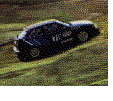
By Mitch McCullough
Mike Welch, my crew chief, is a master fabricator. A real body man. A regular McGyver. Maybe that was in the back of my mind. Or maybe I was frustrated at dealing with the big D. Or maybe I just like to show off – that’s what rallying is all about, after all.
Whatever it was, I had decided to take the jump flat out.
The physics of the situation seemed to have eluded me: Glen Helen Off-Road Vehicle Park just north of San Bernardino had been designed for off-road buggies and trucks, race cars with suspension travel measured in feet. I was sitting in a Mazda 323 GTX, a cheap econobox. That it had a turbo, four-wheel drive and a fantastic factory rally suspension was of no consequence on the big hump I was about to attack.
While walking around the course, I foolishly came to the conclusion that the big hump could be taken without braking. I mean, that’s what Rod Millen would do, right? Or am I thinking about Rod Hall? Anyway, the closed circuit took only five minutes or so to complete and it was a hoot. We’d be topped out in third gear on a straightaway, brake hard for a 180-degree turn, slide sideways through a 70-mph sweeper, then brake hard for the big hump. The rest of the course went considerably farther, but I would not be exploring the rest of it that day.
I sat in line, peering through my helmet as each rally car took its turn. The suspension of the first car got light as it went over the hump. “Whoa” went the crowd in the stands. The next car caught a little air, maybe six inches. “Yes!” shouted the crowd. As I watched, I thought: “Why are they braking so hard for that jump?” Beside me was co-driver Scott Webb, who had some sort of misplaced, irrational, idiotic faith in my driving abilities.
We pulled up to the start line. On cue, the starter draped a green flag over the front of the windshield and shouted, “Five! Four! Three! Two! One!” Then he yanked the flag up and quickly stepped back from the car. “Go!”
I stood on it and all four knobby Michelins twisted in the dirt. I grinded it on the upshift to second, but otherwise it was a good launch. I braked for the 180-degree turn and slid around a giant earth-moving tire. We slid to the outside as I accelerated out of the turn, but I stayed with it opening up the steering wheel to keep the speed coming on. As we approached the sweeper, I lifted, turned in and got back on the throttle. The car pivoted and slid around the corner, all four wheels slinging dirt. “This is going to be a good run,” I thought.
As we approached the jump, I lifted off the throttle where most people had been braking. We were doing about 65 mph. A cry crackled in my intercom: “Oh shit!” I stepped on the throttle again as we crested the top of the jump, thinking that would keep the nose up.
The little GTX jumped toward the heavens. Observers said there was at least 12 feet between the bottoms of the tires and Mother Earth. From inside the car, it seemed like the sky darkened as we crested the upper edge of the atmosphere. Our poorly designed rocket hit its apogee, then began the long ascent back to earth. When the ground loomed directly ahead I began to realize I may have overdriven just a bit. “Oh!” the crowded shouted. “What was he THINKING?”
It was a tremendous impact. The car landed on the front bumper. The radiator ripped in half, the hood crumpled, the bell housing cracked, the front wheels bent and most of the front clip was destroyed. Instead of going end over end, the car came to an abrupt halt and bounced back onto its wheels.
I looked to the right as the dust settled. “Are you okay?” “Ooof” was the only sound that came from the other seat. “Ooof.” Scott felt like he suddenly had a mouthful of sand. It was later determined that that was the enamel from all of his teeth. The emergency crew loaded us up on stretchers and carted us to the hospital where we spent a long, boring, humiliating day getting X-rays. We had stiff necks, I had bruised pride and Scott spent a fortune on dental work that year. Mike filmed the whole incident and later had the audacity to put it on his Web site, but the view from inside the car felt far more dramatic than the video portrays.
Mike quickly rebuilt the car in the Road/Race facility, replacing or repairing everything ahead of the windshield. We went on to win the California Rally Series championship that year. It was 1993 and we each earned Rookie of the Year titles. The following season, I drove off a 500-foot cliff in Arizona, rolling five times and stopping against a bush 100 feet down. The car looked destroyed, but we winched it to the top of the mountain and Mike had it back in the rally the following morning. We went on to win the 1994 SCCA PRO Rally Southern Pacific Division Championship in Open Class.
But that’s another story.
McCullough is a contributing correspondent to Field & Stream, AutoWeek, Sport Compact Car and European Car. He edits a car-buyer’s guide that can be seen at www.newcartestdrive.com. He now brakes for fly-overs.
Coming soon, the Co-Driver’s Version:
“It wasn’t my fault”
















